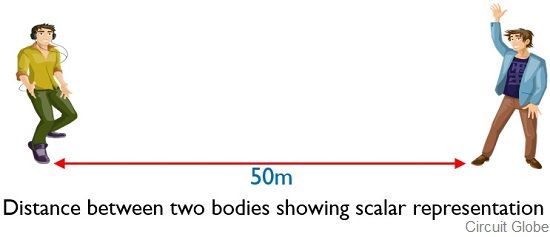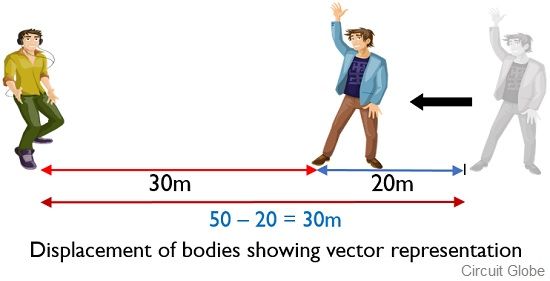Scalar and Vector are the two major classifications of a quantity. The crucial difference between scalar and vector quantity is that a scalar quantity is the one that is simply associated with the magnitude of any quantity. As against a physical quantity that considers both magnitude, as well as direction, is termed as a vector quantity.
Here in this article we will see some other parameters of differentiation between the two but using a comparison chart.
Content: Scalar Quantity Vs Vector Quantity
Comparison Chart
| Parameter | Scalar Quantity | Vector Quantity |
|---|---|---|
| Associated with | Only magnitude | Magnitude and direction both |
| Nature | Simple | Complex |
| Representation | Simply by symbol of quantity. | Either by symbol of quantity in bold or by an arrow above the symbol of quantity. |
| Variation | Change in quantity is only the result of magnitude variation. | Change in quantity is the outcome of variation in either magnitude, direction or both simultaneously. |
| Dimension | One-dimensional | Either one, two or three-dimensional. |
| Examples | Distance, temperature, speed, charge, frequency, etc. | Displacement, momentum, force, electric field, magnetic field, etc. |
Definition of Scalar Quantity
A type of quantity in which measurement is defined only by the magnitude of the measurand is known as a scalar quantity. A scalar quantity never considers the direction as its only concern is associated with magnitude. So, in the case of scalar, whenever a change in quantity is noticed then it is only due to the variation in its magnitude.
Basically scalar quantities follow basic laws of algebra and thus can be easily added, subtracted, multiplied or divided algebraically just like normal numbers. However, they must contain the same units. The multiplication of two scalar quantities is known as dot product.
Let us understand scalar quantities by considering an example of distance.
We know the basic definition of distance specifies the overall length of a path that is covered by an object. So, distance has nothing to do with the direction of movement. This is so because whatever the direction of movement is, the length of the path is independent of the direction of movement in case of distance.
It doesn’t matter whether the movement is either forward-backward or left-right. Only the range of movement is taken into consideration. Thus we say that distance is a scalar quantity. The presence of only magnitude makes this quantity simple by nature.
Definition of Vector Quantity
A quantity in which measurement is defined by both magnitude and direction of the measurand is said to be a vector quantity. So, two vector quantities are said to be equal when they have equal magnitude and similar direction. Thus we can say that change in vector quantity is associated with variation in both magnitude and direction. As direction is associated with the quantity so, it does not follow basic algebraic laws, despite follows the laws of vector algebra.
Vector quantities can never be divided with one another. However, the vector product of two quantities can be produced and it is said to be the cross product.
Let us take an example of ‘displacement’ a vector quantity in order to understand this.
So basically displacement is defined as the path length covered in a certain direction by an object. Thus we say in case of displacement the direction of movement is a crucial factor for its determination.
Therefore, we can say that the magnitude of displacement can be equal or less than the complete length of the path. Because, if the object is moving in forward and reverse direction then in case of change of direction, the net traversed path will get subtracted.
Key Differences Between Scalar and Vector Quantity
- A scalar quantity defines the measurement in terms of magnitude only. While a vector quantity is associated with a measurement in terms of magnitude and direction.
- Scalar quantities possess one-dimensional behavior whereas vector quantities can be either one, two or three dimensional.
- In the case of scalar quantity, the variation is the result of a change in magnitude only. While in the case of vector quantity it is the outcome of either magnitude, direction or both.
- Scalar quantities exhibit simplicity in measurement. However, the involvement of direction along with magnitude increases the complexity of vector quantities.
- Generally, in order to represent a scalar quantity, its magnitude along with the unit is used. While a vector quantity is represented either by magnitude and unit written in bold or by an arrow above the magnitude.
- Scalar quantities can be easily summed up and subtracted. Also, its product is easily generated and can be divided as it follows the basic laws of algebra. But vector quantities follow the laws of vector algebra.
- The examples of scalar quantities are distance, speed, charge, pressure, temperature, frequency, time, etc. While quantities like displacement, force, velocity, electric field, magnetic field, and acceleration, etc. are examples of vector quantities.
Conclusion
So, this discussion concludes that each and every quantity can be either scalar or vector depending upon whether it is concerning direction or not.


